Google Cloud Seeing ‘Significant’ VMware ‘Momentum’: GM
Google Cloud’s infrastructure leader, Sachin Gupta, talks to CRN about customer momentum with Google Cloud VMware Engine, as well as Google’s new powerful C3 VM and market differentiation versus AWS and Microsoft.

Google Cloud is witnessing “significant momentum” with VMware Engine as customers save significantly in infrastructure costs when moving VMware-based applications to Google Cloud.
“One customer we work very closely with, they are seeing 60 percent savings in infrastructure costs,” said Sachin Gupta, general manager and vice president of Infrastructure at Google Cloud in an interview with CRN. “They were able to move 80 percent of their on-prem VMs and 50 percent of their on-prem databases into VMware Engine.”
Gupta touted Google Cloud’s partnership and momentum with the Palo Alto, Calif.-based dominant virtualization superstar around its Google Cloud VMware Engine offerings.
“We see a lot of partners engaging here saying, ‘Do you want to continue to maintain those data centers on-premise?’ Because there’s a cost associated with that. You have to keep replacing machines and power and all of that. Or do you want to buy this VMware service from Google?” said Gupta.
[Related: ‘Unprecedented’ Google-Mandiant Integration In Full Swing: Cloud Security VP]
Gupta was a top executive at Cisco for 23 years before joining Google Cloud in 2020 to lead the $24 billion cloud giant’s compute, storage, networking, distributed cloud and technical infrastructure portfolio.
Google Cloud VMware Engine
In 2020, Mountain View, Calif.-based Google Cloud formed a partnership with VMware to create Google Cloud VMware Engine.
The solution allows customers to easily lift and shift their VMware-based applications and VMs to Google Cloud without having to change their apps, tools or processes.
The offer includes all the hardware and VMware licenses to run a dedicated VMware SDDC (software-defined data center) in Google Cloud. The VMware Engine is built on Google Cloud’s infrastructure with Google saying customers can provision an entire VMware SDDC environment in about 30 minutes.
“What we’re saying here is, ‘You don’t need to necessarily take your VMware VMs and rejiggle everything to get the benefits of cloud. You can take those VMware VMs and just leverage this as-a-service in cloud,’” said Gupta. “We are seeing significant momentum.”
The companies recently launched VMware Tanzu Standard edition on Google Cloud VMware Engine to help simplify Kubernetes adoption and management, while Google Cloud VMware Engine also became part of VMware Cloud Universal.
Gupta talks to CRN about Google Cloud VMware Engine momentum, the company’s new C3 VMs with a performance boost, as well as Google’s market differentiation versus cloud rivals Amazon Web Services and Microsoft.
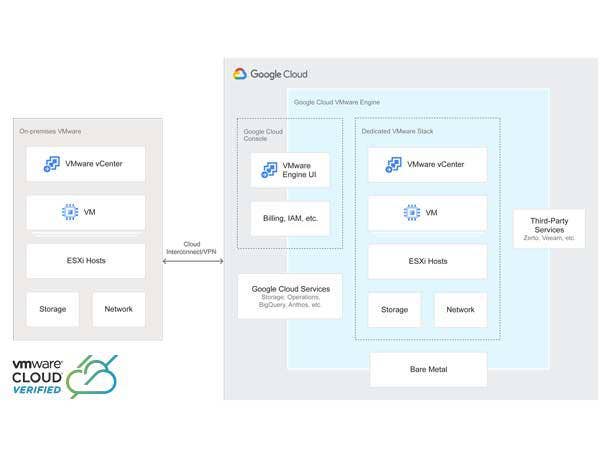
How is customer momentum around Google Cloud VMware Engine?
There’s lots and lots of VMware VMs out there. This is a huge opportunity.
We see a lot of partners engaging here saying, “Do you want to continue to maintain those data centers on-premise?” Because there’s a cost associated with that. You have to keep replacing machines and power and all of that. Or do you want to buy this VMware service from Google?
We were the first to be inserted into VMware Cloud Universal program. Think of this as an easier way for customers to manage licensing, whether it’s on-prem or in the cloud. So we were first with them.
One customer we work very closely with, they are seeing 60 percent savings in infrastructure costs.
They were able to move 80 percent of their on-prem VMs and 50 percent of their on-prem databases into VMware Engine.
They are seeing 60 percent cost savings on infrastructure—the entirety total cost of ownership. Because there’s licensing in it, but they have to buy compute, they have to buy storage, they have to do networking, they have to run the service, they have to buy the data center.
And here, you’re just buying a service, right? We’re taking care of all of that for you. And you’re consuming your VMs and your databases through the service that we’ve created.
We were having a bunch of conversations on, “Help me with my on-prem VMware environment and where to take it.” So I think we’re just going to see more and more.
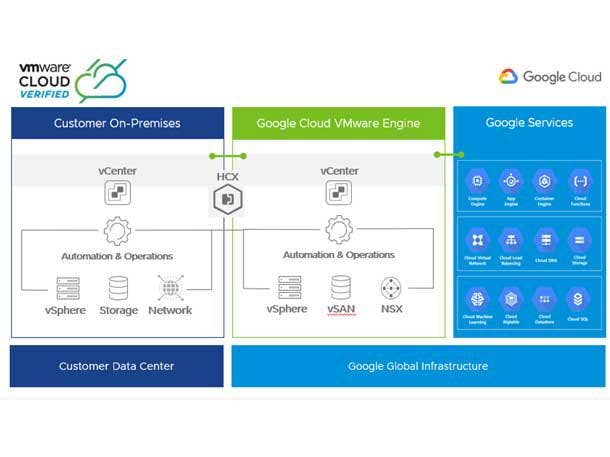
How big of an opportunity here is VMware Engine for Google Cloud and your partners?
I’m going to say 90 percent of these workloads are still on premise—more than 90 percent. And we all know the dominance that VMware enjoyed on-prem with VMs.
So you can expect that a very large chunk of those are VMware VMs.
What we’re saying here is, ‘You don’t need to necessarily take your VMware VMs and rejiggle everything to get the benefits of cloud. You can take those VMware VMs and just leverage this as-a-service in cloud.’
So the amount of rework you have to do is minimized.
Customers are looking at their environment saying, “How do I save on cost? How do I reduce my risk?” If you’re buying this as-a-service, you can scale it up or down. You don’t have to worry about it.
If you build your own data center and put everything in place, you’re now committed to this.
So we really want to help. We want to make sure we consult and our partners going here and help customers decide, “Do you start consuming this in cloud? Do you move to a cloud native solution? Or do you just use a VMware enabled solution in Google Cloud?”
Those are the options we want to make sure we make available.
The VMware Engine we’ve had for about two and a half years now. We are seeing significant momentum.
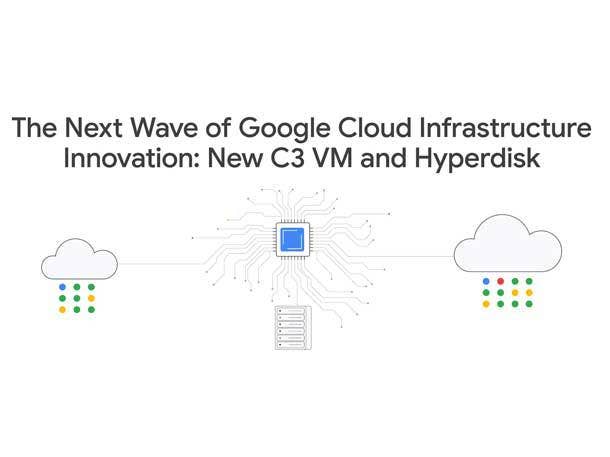
Talk about Google Cloud’s new C3 VMs? What’s the biggest highlight?
C3 VMs has more than 10 times the IOPS and more than four times the throughput [compared to previous generations].
For certain workloads, just because the storage performance, the network performance, the compute performance of these VMs is so much better—some of our customers are seeing up to 10X performance improvement in what they’re trying to solve for.
If you think about 10X: if you can get to an answer 10-times faster—that’s amazing.
The last C2 VM generation launched about 18 months. This is a major upgrade. This has many, many things going with it.
Normally, the updates are around 20 percent to 30 percent higher in terms of performance characteristics. This one has multiple things going on.
First of all, it uses the latest [Intel] processor. At the same time, it offloads the networking capability and takes the networking capability to 200 Gb/s throughput, which hasn’t been done on this kind of VM before.
It would go up to 100 Gb/s before [in C2 VM]. C3 is now doubling the network networking bandwidth that you can get access to.
We’re taking all the storage functions and offloading them—that’s how you get the much higher IOPS. Because as you’re doing input-output to storage systems, we can offload all of that processing and get you much, much better performance.
We are trying to help our customer optimize for performance, optimize for cost based on their workload and based on their application—that’s how C3 is designed.
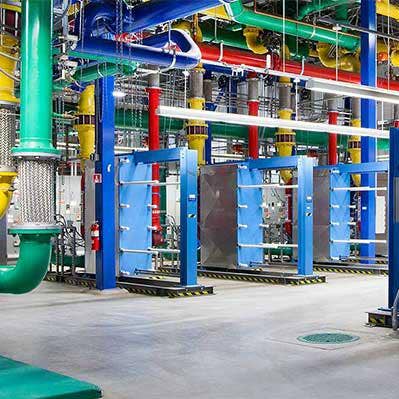
Google is spending billions on launching new data centers globally at a fast rate. Talk about Google Cloud’s data center strategy ahead?
It’s super important for us to make sure that we have a presence in all the right locations. And we continue to expand our footprint.
We recently announced four more regions, and at Google Cloud Next, we announced eight more.
So that’s a stronger presence in South America, stronger presence in Africa, more and more countries in Europe.
The idea is to be able to reach everyone wherever there is business, wherever there’s customers are, and provide our innovative cloud services to them.
There’s also a lot of emerging requirements, like data sovereignty, ‘I need my data to stay in my country,’ for example. Customers are looking for better control.
So more and more, we believe that it’s important for us to be in key locations across the globe. We’re very excited about being able to continuously expand our global footprint.
I think we’ve sort of accelerated this year, actually, in terms of data center announcements we’ve made.
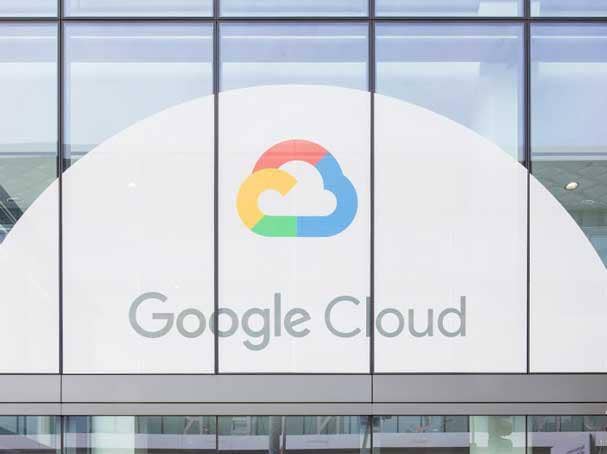
What is Google Cloud’s primary market differentiation versus AWS and Microsoft?
Having a global presence and having the price performance is kind of table stakes. So can we do better there? Yes.
We launched many new products [at Next] that perform better and are more cost effective, etc.
It’s about the transform conversation, “How will you helped me gain insights from my data?” That’s super important.
I think our portfolio in terms of, “I want to modernize using containers, using serverless” — we are extremely powerful there. These are things that Google invented, right?
Google contributed to the open-source community and this is where customers look to us around, “OK, help me get the most advantage out of what you’re bringing to the table.”
Then also security. For example, look at our Google Cloud Armor network security.
The fact that we’ve been protecting our own infrastructure for so many years, we have a lot of knowledge and skills in this area.
Now with Mandiant coming into the picture, “How can we help you be more secure in however you think about your infrastructure, and however you deploy it?”
These I think are areas that that we are significant differentiated in.